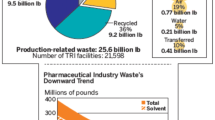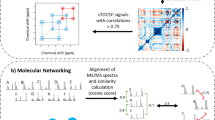Abstract
Prafulla Chandra Ray’s contribution to the birth and development of an ‘Indian school of chemistry’ is well documented. But much of this recognition is situated in the realm of the social history of science. My aim in this essay is to view Ray through the lens of intellectual history and, above all, to shed fresh light on his actual contribution to the chemistry of the nitrites of mercury. Toward this end the focus here will be on five of Ray’s earliest papers on this family of compounds. We will see that the received narrative that Ray discovered mercurous nitrite is problematic. Examining the texts of his early papers it will be seen that Ray’s main contributions to the nitrites of mercury were (i) his apparently serendipitous discovery of a method of synthesizing mercurous nitrite; and (ii) the identification of and solutions to a series of interrelated Kuhnian normal science problems pertaining to this family of compounds. Furthermore (iii) the tools of intellectual history will help discern an underlying ‘plot structure’ informing the tenure of his work; and finally (iv) we will see that the centre-periphery model that attends the social historiography of science in colonial and post-colonial India plays no role in illuminating Ray’s early creative work on the nitrites of mercury.
Similar content being viewed by others
Data availability
No data are used in this paper.
Notes
But see also Golinski 1990 who argued that the beginnings of the chemical revolution can be located in the works of Boyle and others in the seventeenth century.
Indeed, Dhruv Raina (1997) ascribes the birth of the social history of Indian science to Ray’s great 2-volume treatise on the history of Hindu chemistry.
One reviewer of this writer’s recent book The Second Age of Computer Science (2018) referred to it as resembling “Kuhn-inspired internalist histories of science and technology from the 1970s.” (C.C.M. Mody, ISIS, Vol. 111, 2, June 2020, pp 439–440.
See also the bibliography of Ray’s scientific papers in his obituary notice in the Journal of the Indian Chemical Society, XXI, 1944, pp. 253–259 — a journal which Ray himself had founded in 1923.
However, as Chakravorty (2014) has so well illuminated, Ray’s ‘normal science’ had consequences: not only did it initiate a flourishing ‘school of Indian chemistry’ (see Majumdar, 2010)—especially in the realm of nitrites of mercury and other metals (see also Mellor, 1922, pp 758–759)—but it also stimulated other chemists in more recent times to refer to Ray’s original papers in their own investigations. In this sense Ray was not only H-original (that is, original with respect to his past history) but was also what I have termed C-original (‘consequentially original’): his work had consequences or implications for the future history of the field (Dasgupta, 2018).
References
Anderson, R. S. (2010). Nucleus and nation. University of Chicago Press.
Baber, Z. (1996). The science of empire. The State University of New York Press.
Basalla, G. (1967). The spread of western science. Science, 156, 611–622.
Boden, M. (1991). The creative mind. Basic Books.
Bose, J. C. (1895). On the polarisation of electric rays by doubly refracting crystals. Journal of the Asiatic Society of Bengal, 64, 291–296.
Brett, A. (2002). What is intellectual history now? In D. Cannadine (Ed.), What is history now? (pp. 113–131). Palgrave Macmillan.
Butler, C. (2002). Postmodernism: a very short introduction. Oxford University Press.
Chakrabarti, P. (2004). Western science in modern India. Permanent Black.
Chakravorty, A. (2014). Chemistry of nitrites: contributions of P.C. Rây and some later developments. Journal of the Indian Chemical Society, 91, 1205–1212.
Choudhuri, A. R. (2018). How the Saha ionization equation was discovered. https://arxiv.org/ftp/arxiv/papers/1810/1810.10898.pdf.
Choudhuri, A. R., & Singh, R. (2018). The FRS nomination of Sir Prafulla C. Ray and the correspondence of N.R. Dhar. Notes and Records of the Royal Society, 72, 57–73.
Cohen, H. F. (1994). The scientific revolution: A historiographical inquiry. University of Chicago Press.
Culler, J. (2011). Literary theory: A very short introduction. Oxford University Press.
Dasgupta, D. (2021). Creativity in the periphery: Trading zones of scientific exchange in colonial India. University of Pittsburgh Press.
Dasgupta, S. (2018). The second age of computer science. Oxford University Press.
Dasgupta, S. (2019). A cognitive historical approach to creativity. Routledge.
Dasgupta, S. (2022). Jagadis Bose’s panvitalism as intellectual history. Indian Journal of History of Science, 57(1), 26–36.
Divers, E., & Haga, T. (1887). The reaction between sulphites and nitrites of metals other than Potassium. Journal of the Chemical Society, Transactions, LI, 659–663.
Eliade, M. (1978). The forge and the crucible: The origins and structures of alchemy (2nd ed.). University of Chicago Press.
Golinski, J. V. (1990). Chemistry in the scientific revolution: Problems of language and communication. In D. C. Lindberg & R. S. Westman (Eds.), Reappraisals of the scientific revolution (pp. 367–396). Cambridge University Press.
Habib, S. I., & Raina, D. (Eds.). (2007). Social history of science in colonial India. Oxford University Press.
Harvey, D. (1990). The condition of postmodernity. Blackwell.
Hess, D. (1997). Science studies: An advanced introduction. New York University Press.
Kuhn, T. S. (2012). The structure of scientific revolutions (4th ed.). University of Chicago Press.
Kumar, D. (1997). Science and the Raj. Oxford University Press.
LaCapra, D. (1983). Rethinking intellectual history. Cornell University Press.
Lakatos, I. (1978). Methodology of research programmes. Cambridge University Press.
Latour, B. (1987). Science in action. Harvard University Press.
Latour, B., & Woolgar, S. (1986). Laboratory life. Princeton University Press.
Laudan, L. (1977). Progress and its problems. University of California Press.
MacLeod, R. (1987). On visiting the moving metropolis: Reflections on the architecture of imperial science. In N. Reingold & M. Rothenberg (Eds.), Scientific colonialism: A cross-cultural comparison (pp. 217–249). Smithsonian Institution Press.
Majumdar, M. (2010). The making of an Indian school of chemistry, Calcutta 1899–1924. In U. Dasgupta & D. Chattopadhay (Eds.), History of science, philosophy and culture in Indian civilization, Vol XV, Pt. 4, science and modern India 1784-1947. Pearson Education India.
Margolis, E., & Laurence, S. (Eds.). (2007). Creations of the mind: Theories of artifacts and their representations. Oxford University Press.
Mellor, J. W. (1922). Inorganic and theoretical chemistry (Vol. IV). Longmans, Green & Co.
Pickering, A. (1995). The mangle of practice. University of Chicago Press.
Popper, K. R. (1968). The logic of scientific discovery. Harper & Row.
Raina, D. (1996). Reconfiguring the centre: The structure of scientific exchange between colonial India and Europe. Minerva, 34, 161–176.
Raina, D. (1997). The young P.C. Ray and the inauguration of the social history of science in India (1885–1907). Science, Technology & Society, 2(1), 1–38.
Raj, K. (2007). Relocating modern science. Palgrave Macmillan.
Ray, P. C. (1896). On mercurous nitrite. Journal of the Asiatic Society of Bengal., 65(Part II), 1–9.
Ray, P. C. (1897a). The nitrites of mercury and the varying conditions under which they are formed. Journal of the Chemical Society, Transactions, 71, 337–345.
Ray, P. C. (1897b). Mercury hyponitrites. Journal of the Chemical Society, Transactions, 71, 348–349.
Ray, P. C. (1902). Dimercurammonium nitrite and its haloid derivatives. Journal of the Chemical Society, Transactions, 81(Pt. I.), 644–650.
Ray, P. C. (1904). Mercuric nitrite and its decomposition by heat. Journal of Chemical Society, Transactions, 85(Pt. II), 523–527.
Ray, P. C. (1907). Mercurous hyponitrite. Journal of Chemical Society, Transactions, 91(Pt. II), 1404.
Ray, P. C. (1932). Life and experiences of a Bengali Chemist. Chuckervertty, Chatterjee & Co., Kegan Paul, Trench, Tribner & Co.
Ray, P. C. [1902-06, 2nd ed.] (2002). A history of Hindu chemistry, Volumes I & II. (Centenary Edition). Shaibya Praksahan Bibhag.
Samanta, S., Goswami, S., & Chakravorty, A. (2011). On mercurous nitrite and a basic mercurous nitrate derivative. Indian Journal of Chemistry, 50A, 137–140.
Subbarayappa, B. V. (2013). Science in India: A historical perspective. Rupa.
Sur, A. (2011). Dispersed radiance: Caste, gender and modern science in India. Navayana.
Whatmore, R. (2016). What is intellectual history? Polity.
Whatmore, R., & Young, B. (Eds.). (2016). A companion to intellectual history. Wiley-Blackwell.
White, H. (1978). Tropics of discourse. Johns Hopkins University Press.
Ziman, J. (2000). Real science: What is it and what it means. Cambridge University Press.
Acknowledgements
I thank Dhruv Raina and Arnab Rai Choudhuri for their remarks on an earlier version of this essay. I am also grateful to the anonymous reviewers for their critical, acute but constructive comments that helped considerably in shaping the final version of this essay.
Author information
Authors and Affiliations
Corresponding author
Rights and permissions
Springer Nature or its licensor (e.g. a society or other partner) holds exclusive rights to this article under a publishing agreement with the author(s) or other rightsholder(s); author self-archiving of the accepted manuscript version of this article is solely governed by the terms of such publishing agreement and applicable law.
About this article
Cite this article
Dasgupta, S. An intellectual history of P.C. Ray’s papers on the nitrites of mercury. Indian J Hist. Sci. 58, 20–28 (2023). https://doi.org/10.1007/s43539-023-00078-0
Received:
Accepted:
Published:
Issue Date:
DOI: https://doi.org/10.1007/s43539-023-00078-0




